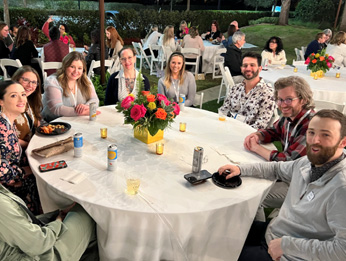A few months ago I wrote about the importance of video in your marketing strategy. There was a time not that long ago when shooting video required expensive equipment and hiring a specialist. Not anymore. Shooting video has never been easier and you have everything you need in your cell phone!
Chances are, you’ve already shot video with your phone, so you know how to access your phone’s video capabilities. Whether you’re shooting an owner or audiologist promoting a practice or a happy patient for a quick testimonial, here are a few tips to guide through the process.
The Basics
 Ideally, you’re looking for 60-90 seconds per video without the use of a script. Anything longer and the speaker might get sidetracked and lost in thought. Make it look and feel natural. If you want to promote your practice and have a lot to say, consider breaking it up into a few videos, each on a certain aspect of why your practice excels or services you offer. If you have a testimonial, speak with that person first to see what they have to say as a short rehearsal, then give them the cue or prompt them with a question and hit record.
Ideally, you’re looking for 60-90 seconds per video without the use of a script. Anything longer and the speaker might get sidetracked and lost in thought. Make it look and feel natural. If you want to promote your practice and have a lot to say, consider breaking it up into a few videos, each on a certain aspect of why your practice excels or services you offer. If you have a testimonial, speak with that person first to see what they have to say as a short rehearsal, then give them the cue or prompt them with a question and hit record.
Location
You’ll need a quiet, well-lit room. It doesn’t have to be the nicest room in the office, but a nice neutral wall works best as the background. If you have elegant posters or works of art that you think will look good as the background, then have them stand in front of them. Make sure the room is free from the usual office noise (ringing phones, lobby television, office chatter, etc.) and foot traffic.
Camera Settings
You can use your camera’s default settings or have it in fully automatic if you follow these few basic rules:
- Lighting: Lighting is key to video. A friend once told me that without lighting, it’s radio. Make sure the room where you’ll be shooting the video has plenty of light, preferably natural, indirect sunlight. Direct sunlight can wash your subject out and created harsh shadows. Under low light conditions, your video will appear too dark or, if the camera compensates for the lack of light, too grainy.
- Sound: Capturing good sound is just as important as capturing good video. Believe it or not, bad audio is worse than bad video. Most viewers will tolerate poor video quality, but no one can stand poor audio no matter how clear the video is. Make sure you stay close to the subject and your hand is not covering the phone’s built-in microphone (a tiny hole located at the base of the phone).
- Stabilize: Unless you’re using a tripod, you’’ll need to keep the camera as stable as possible. Hold the camera with both hands (still making sure you don’t cover the microphone) and keep elbows as close to your body as possible — maybe even rest them on your waist for added support. Keep the camera at eye level! Unless you’re shooting a sequel to the Blair Witch Project, you don’t want to point the camera up someone’s nose.
- Focus: Press and hold an area of the shot (in this case, the face) to lock both exposure and focus.
- Get close to the subject: First, this gets the microphone closer to the sound source. Second, it avoids having to zoom in to the subject. Zooming in can decrease the clarity of the video and intensifies any camera shake.
- Composition: While the tendency is to hold your phone vertically, that is not the standard format for video. Keep your camera in the horizontal, landscape format. When composing your shot, don’t place the head right in the middle. Instead, place the head slightly above center and closer to the top. You want the eyes about a third way from the top.
- Keep it simple: Avoid panning, zooming, and any other fancy moves or effects. Those will just distract from the subject.
- Share: Once the video is done, simply share it to various social media outlets.
Like anything else, practice makes perfect. Take a few test shots, make the proper adjustments, and you’re all set!









